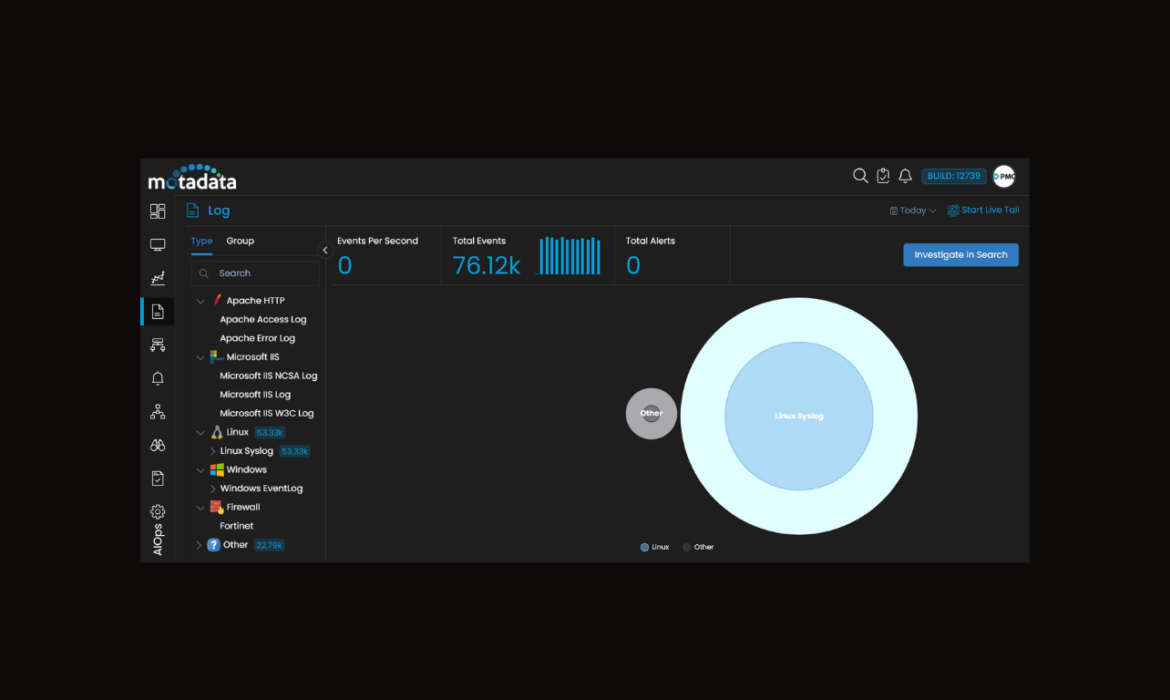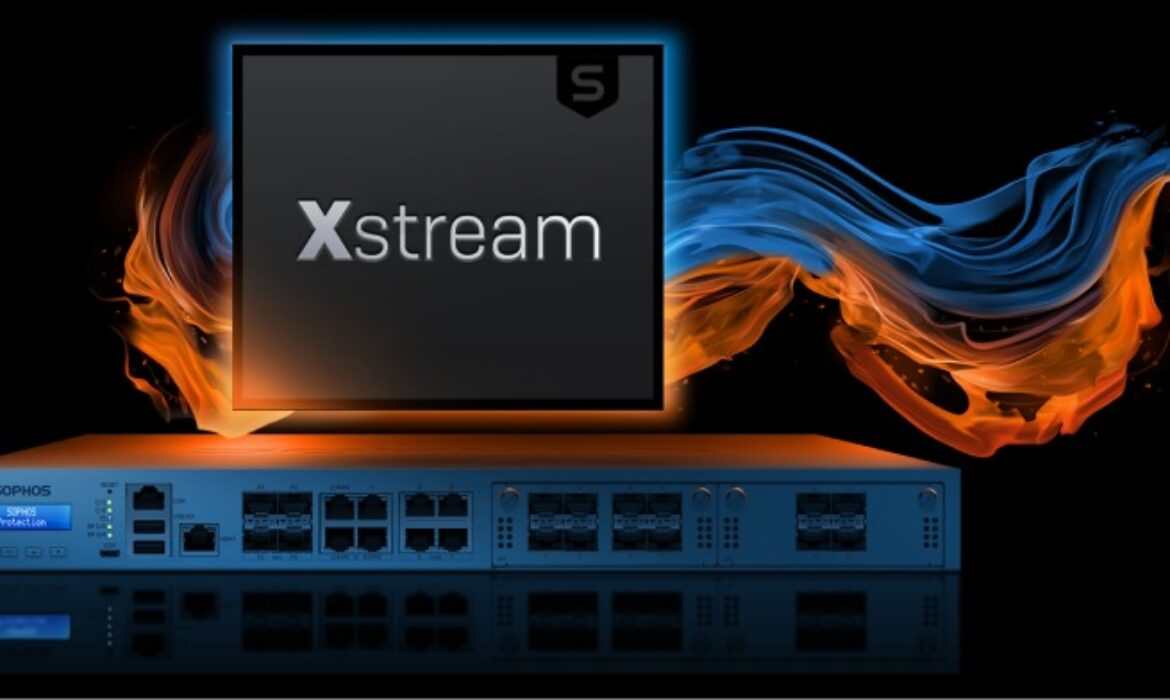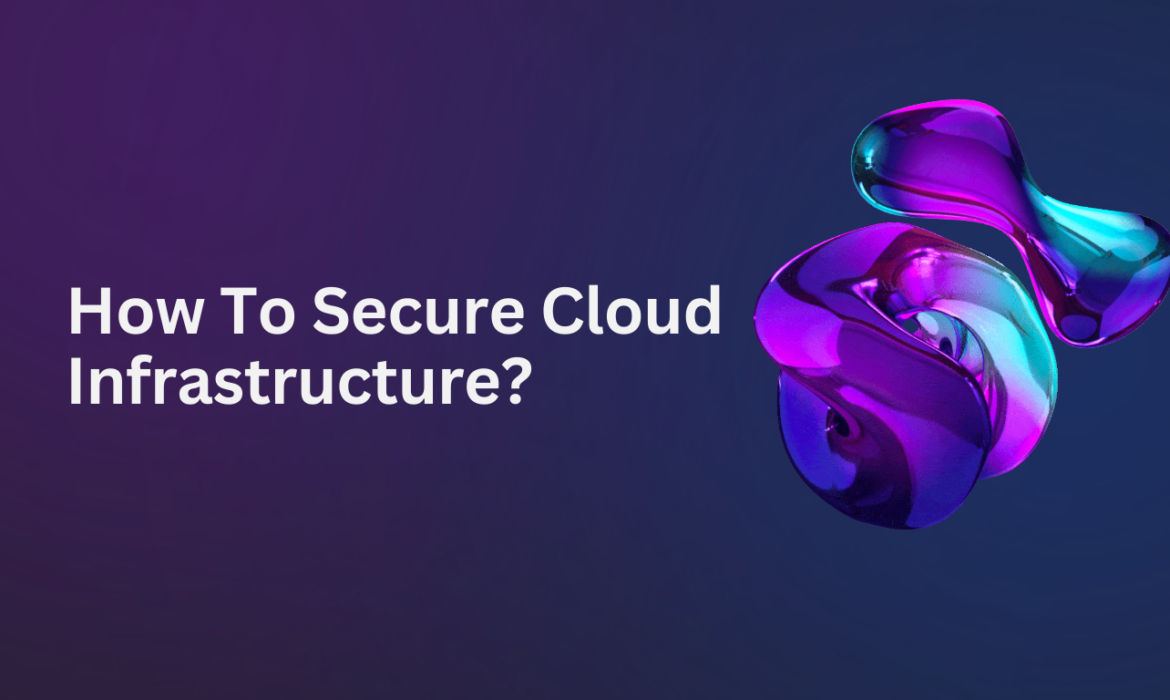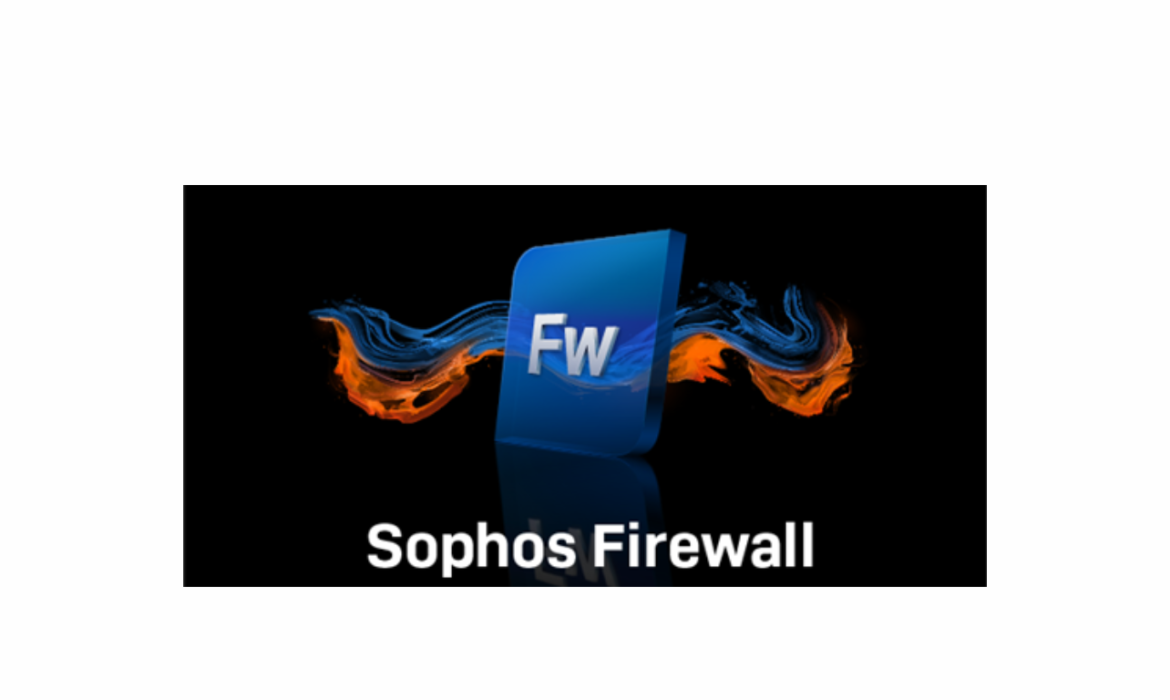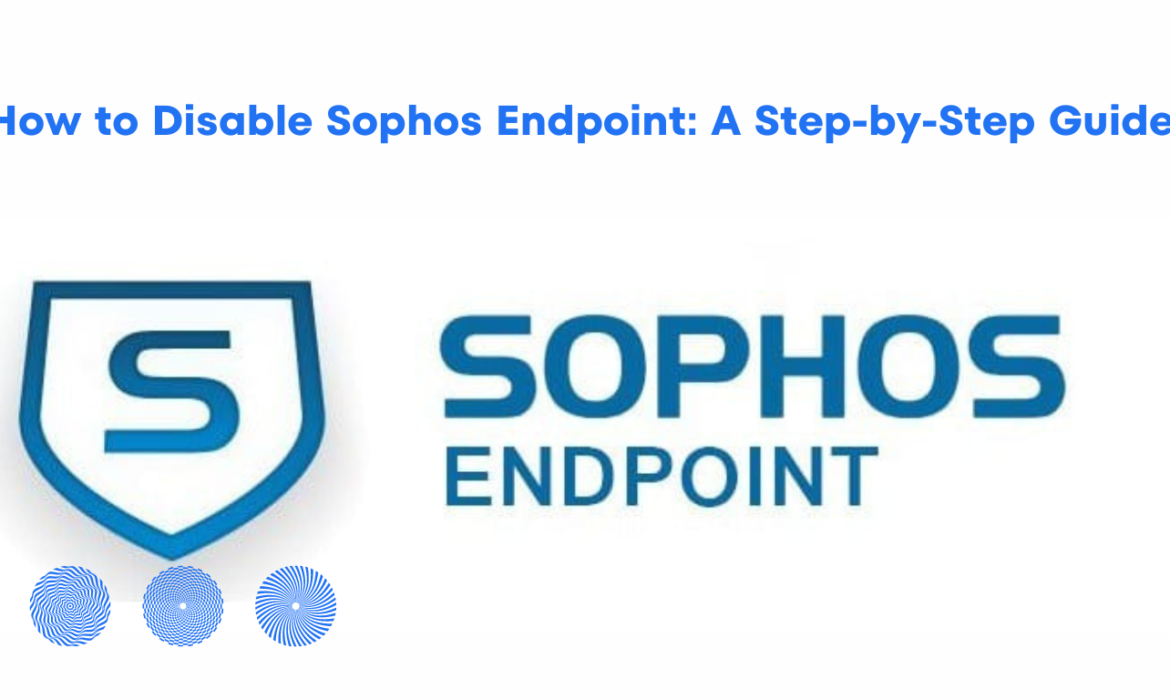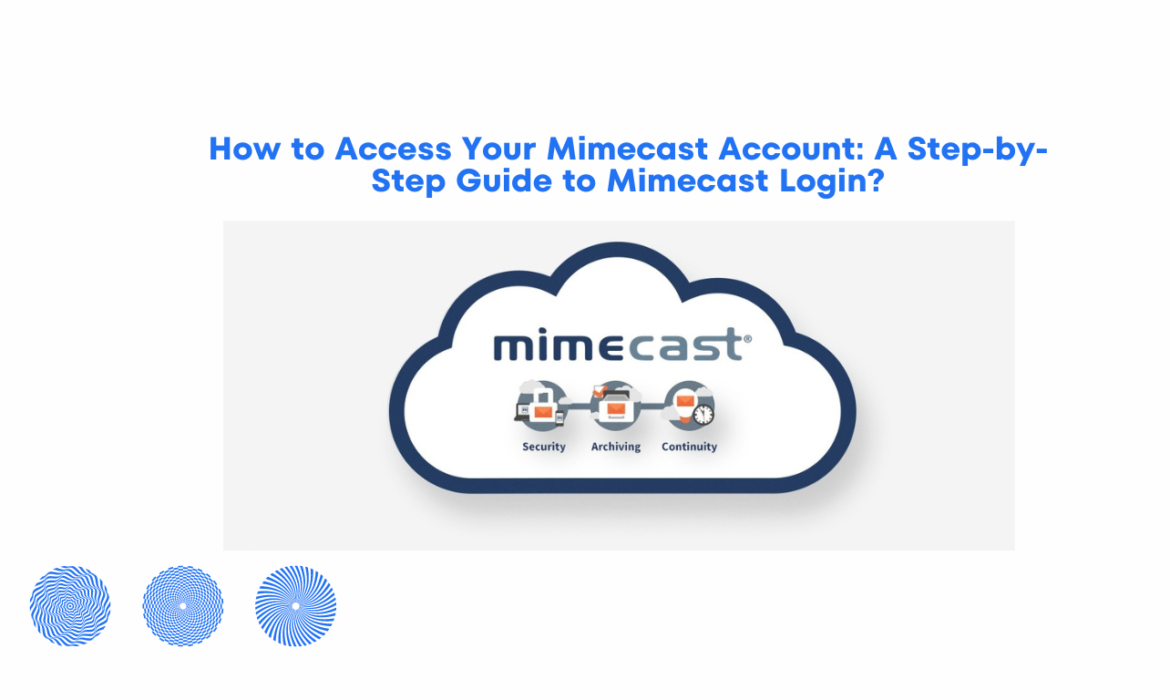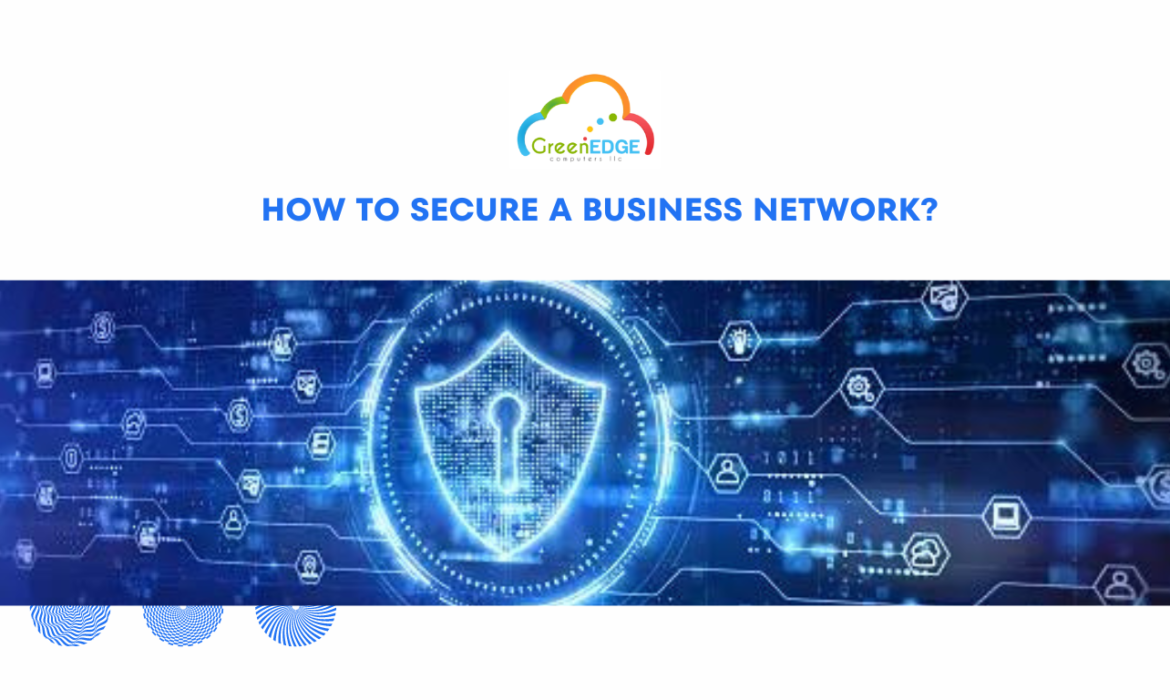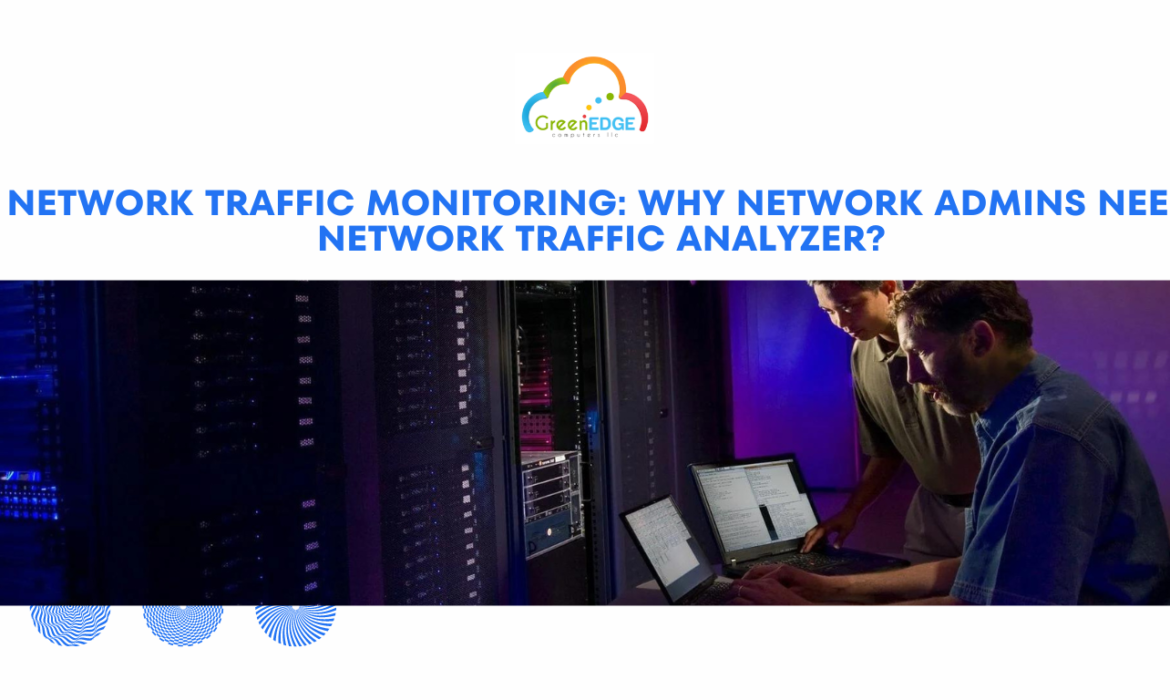Maximize Your Network’s Potential with Advanced Motadata Monitoring Solutions
Motadata monitoring is an advanced system that provides real-time monitoring and analytics capabilities to organizations. It is a comprehensive solution that enables organizations to monitor their entire IT infrastructure, including applications, servers, networks, and databases, from a single platform. The platform collects data from various sources, analyzes it, and provides insights into the health and performance of an organization’s IT infrastructure. This blog will discuss, its benefits, and how it can help organizations in today’s digital world.
What is Motadata monitoring?
Motadata monitoring is a unified monitoring solution that provides real-time insights into an organization’s IT infrastructure. It is a comprehensive platform that helps organizations monitor, manage, and optimize their IT infrastructure. The platform is designed to collect data from multiple sources, including servers, networks, applications, and databases, and provides a single view of an organization’s IT infrastructure.
Motadata provides organizations with real-time alerts, dashboards, and reports, which help them identify potential issues before they become critical. The platform uses advanced analytics to provide insights into an organization’s IT infrastructure, enabling organizations to make data-driven decisions.
Benefits of Motadata monitoring
- Real-time monitoring
Motadata monitoring provides real-time monitoring capabilities, which help organizations identify potential issues before they become critical. Real-time monitoring enables organizations to take immediate action to resolve issues and prevent downtime.
- Comprehensive monitoring
Monitoring is a comprehensive monitoring solution that monitors an organization’s entire IT infrastructure, including servers, networks, applications, and databases. It provides a single view of an organization’s IT infrastructure, which helps organizations identify issues quickly.
- Advanced analytics
Monitoring uses advanced analytics to provide insights into an organization’s IT infrastructure. It uses machine learning algorithms to identify patterns and anomalies, which help organizations identify potential issues before they become critical.
- Customizable dashboards
Monitoring provides customizable dashboards that enable organizations to monitor the metrics that matter most to them. Customizable dashboards help organizations stay on top of their IT infrastructure’s health and performance.
- Scalability
Motadata monitoring is a scalable solution that can handle large amounts of data. It can scale up or down depending on an organization’s needs, which makes it ideal for organizations of all sizes.
How can Motadata monitoring help organizations in today’s digital world?
- Faster issue identification and resolution
In today’s digital world, downtime can have a significant impact on an organization’s bottom line. Motadata monitoring enables organizations to identify potential issues before they become critical, which helps them resolve issues faster and prevent downtime.
- Improved customer experience
In today’s digital world, customer experience is more critical than ever. Motadata monitoring enables organizations to monitor their applications and services, which helps them identify potential issues that could impact the customer experience. It enables organizations to take immediate action to resolve issues and prevent downtime, which helps improve the customer experience.
- Increased productivity
Motadata monitoring enables organizations to monitor their IT infrastructure from a single platform. It provides real-time alerts, dashboards, and reports, which help organizations identify potential issues quickly. It enables organizations to take immediate action to resolve issues, which helps increase productivity.
- Cost savings
Motadata monitoring enables organizations to identify potential issues before they become critical, which helps prevent downtime. Downtime can be expensive, and organizations can save money by preventing it. It also helps organizations optimize their IT infrastructure, which can lead to cost savings.
- Compliance
In today’s digital world, compliance is more critical than ever. Motadata monitoring enables organizations to monitor their IT infrastructure, which helps them ensure compliance with regulatory requirements. It provides real-time alerts, dashboards, and reports, which help organizations identify potential compliance issues.
Conclusion:
In conclusion, Motadata monitoring is an essential tool for organizations in today’s digital world. It provides real-time monitoring, advanced analytics, customizable dashboards, and scalability, which helps organizations monitor their IT infrastructure and identify potential issues before they become critical. The benefits of Motadata monitoring include faster issue identification and resolution, improved customer experience, increased productivity, cost savings, and compliance. With Motadata, organizations can stay on top of their IT infrastructure’s health and performance and make data-driven decisions to optimize their operations. Overall, Motadata monitoring is a valuable investment for organizations of all sizes looking to improve their IT infrastructure’s efficiency and reliability. Contact Us at Green Edge to know more.
Sophos Firewall Price
If you are looking to stable your enterprise community in Dubai, one solution you would possibly remember is the Sophos Firewall. Sophos Firewall is a complicated network protection solution that offers comprehensive protection against a wide range of threats, which include malware, ransomware, and hacking attempts. In this publish, we’ll explore the Sophos Firewall price in Dubai and what you may anticipate to pay for this powerful protection answer.
What is Sophos Firewall?
Sophos Firewall is a network security solution designed to defend companies from cyber threats. It offers superior protection towards a huge variety of assaults, consisting of malware, ransomware, and hacking attempts. With features like intrusion prevention, utility manipulation, and internet filtering, Sophos Firewall affords complete protection on your business community.
Sophos Firewall Price in Dubai:
The Sophos Firewall price in Dubai can range relying on several factors, which include the range of customers and the extent of protection required. Generally speaking, Sophos Firewall is priced on a in step -with-consumer foundation, with charges ranging from around AED 500 to AED 1,000 consistent with consumers per year.
Sophos Firewall Features:
Here are some of the key functions you could count on from Sophos Firewall:
Network Protection: Sophos Firewall offers superior community protection towards an extensive variety of threats, along with malware, ransomware, and hacking attempts.
Web Filtering: Sophos Firewall can block access to malicious web sites and different online threats, supporting to maintain your network steady.
Application Control: Sophos Firewall helps you to control getting admission to packages to your network, assisting to prevent unauthorized entry to and making sure compliance with organization rules.
Intrusion Prevention: Sophos Firewall can hit upon and block intrusion tries in actual time, helping to prevent attacks earlier than they could do any damage.
Reporting and Analysis: Sophos Firewall provides distinctive reviews on community interest, allowing you to identify capability security threats and take proactive steps to protect your network.
Remote Access: Sophos Firewall includes a VPN for faraway right of entry to, allowing employees to safely access the business enterprise network from anywhere within the global.
Conclusion:
Sophos Firewall is an effective community safety solution that can help shield your commercial enterprise from a wide variety of threats. While the charge of Sophos Firewall in Dubai can vary depending on numerous elements, it commonly costs from around AED 500 to AED 1,000 per consumer in step with yr. With capabilities like community safety, web filtering, and application management, Sophos Firewall offers comprehensive safety for your business network. So in case, you’re seeking to secure your enterprise network in Dubai, Sophos Firewall is really worth considering. Contact us at Green Edge Computers to know more.
Best Practices for Securing Your Cloud Infrastructure
As more and more businesses move to the cloud, security has become a major concern. With the threat of cyber-attacks growing more sophisticated and prevalent, it is crucial to secure your cloud infrastructure. In this blog post, we’ll discuss the best practices for protecting your business data in the cloud.
Understand Your Cloud Infrastructure:
The first step in securing your cloud infrastructure is to understand it. This means knowing what data is stored in the cloud, how it’s stored, who has access to it, and how it’s being used. This information is critical in developing a comprehensive security strategy.
Implement Strong Authentication and Access Controls:
Strong authentication and access controls are essential components of securing your cloud infrastructure. This includes using multi-factor authentication, enforcing strong passwords, and limiting access to sensitive data on a need-to-know basis.
Use Encryption:
Encryption is a fundamental tool for securing your cloud infrastructure. Data encryption ensures that your sensitive data remains secure even if it falls into the wrong hands. Make sure you’re using encryption for data at rest and in transit.
Monitor Your Cloud Infrastructure:
Continuous monitoring of your cloud infrastructure is vital in detecting and responding to security threats. This involves using tools such as intrusion detection systems, firewalls, and security information and event management (SIEM) solutions to monitor unusual activity.
Develop a Disaster Recovery Plan:
No matter how secure your cloud infrastructure is, disasters can happen. Developing a disaster recovery plan is critical in minimizing the impact of an incident. Make sure your disaster recovery plan includes regularly backing up your data and testing the plan to ensure it works.
Keep Your Cloud Infrastructure Up-to-Date:
Keeping your cloud infrastructure up-to-date with the latest patches and updates is vital to maintaining security. Make sure you’re regularly applying security updates to your infrastructure to ensure it’s protected against the latest threats.
Educate Your Employees:
Your employees are your first line of defence when it comes to securing your cloud infrastructure. Make sure you’re educating them on best practices for security, such as using strong passwords, avoiding phishing emails, and reporting suspicious activity.
Conclusion
In conclusion, securing your cloud infrastructure is critical in protecting your business data. By understanding your infrastructure, implementing strong authentication and access controls, using encryption, monitoring your infrastructure, developing a disaster recovery plan, keeping your infrastructure up-to-date, and educating your employees, you can help ensure your cloud infrastructure remains secure. Contact us at Green Edge Computers to know more.
Sophos Firewall: An Introduction to Cybersecurity
Sophos Firewall is a powerful network security device designed to protect your organization against cyber threats. Sophos Firewall offers many features and is suitable for businesses of any size. This blog delves into the features and benefits of Sophos Firewall.
What is Sophos Firewall?
It is a network security device that provides advanced protection against cyber threats. Sophos Firewall, whether hardware or software-based, controls and monitors incoming and outgoing network traffic. Sophos Firewall is designed to offer maximum security, visibility, and control over your network.
Features of Sophos Firewall:
Sophos Firewall offers a wide range of features that make it an ideal choice for businesses of all sizes. Some of the key features of Sophos Firewall include:
- Intrusion Prevention System (IPS): Sophos Firewall comes with an advanced IPS system that helps to detect and prevent network intrusions.
- Application Control: Sophos Firewall controls network access, reducing the risk of cyber attacks.
- Web Filtering: Sophos Firewall’s web filtering capabilities block malicious websites and inappropriate content to prevent user access.
- VPN: Sophos Firewall offers secure remote access through Virtual Private Network (VPN) connections, which enable users to access network resources from anywhere.
- Advanced Threat Protection: Sophos Firewall comes with advanced threat protection capabilities, which help to detect and block malware and other advanced cyber threats.
Benefits of Sophos Firewall:
Sophos Firewall offers a range of benefits that make it an ideal choice for businesses looking to secure their network. Some of the key benefits of Sophos Firewall include:
- Enhanced Security: Sophos Firewall provides advanced security features that help to protect your network against cyber threats.
- Increased Visibility: Sophos Firewall offers enhanced visibility into your network, allowing you to identify potential threats and take proactive measures.
- Improved Control: Sophos Firewall provides control over network access, applications, and web filtering for greater network control.
- Simplified Management: Sophos Firewall provides a centralized management console that makes it easy to manage your network security.
Conclusion
Sophos Firewall is a powerful network security device that offers advanced protection against cyber threats. It provides a range of features and benefits that make it an ideal choice for businesses of all sizes. Choosing Sophos Firewall, you can enhance the security, visibility, and control of your network, and protect your organization against cyber attacks.Contact us at Green Edge.
How to Disable Sophos Endpoint: A Step-by-Step Guide
Sophos Endpoint is a popular security solution that protects against malware and online threats. However, there may be situations where you need to disable Sophos Endpoint temporarily or permanently. In this article, we’ll walk you through the steps on how to disable Sophos Endpoint on your computer.
Step 1: Stop the Sophos Endpoint Service
The first step to disabling Sophos Endpoint is to stop the service. To do this, follow the steps below:
- Press the Windows key + R to open the Run dialogue box.
- Type “services.msc” and press Enter.
- Locate the “Sophos Endpoint” service in the list.
- Right-click on it and select “Stop” from the context menu.
This will stop the Sophos Endpoint service from running on your computer. Keep in mind that this will only temporarily stop the service, and it will start again the next time you restart your computer. If you want to disable the service permanently, follow the steps in the next section.
Step 2: Disable the Sophos Endpoint Service
After stopping the service, the next step is to disable it. Here’s how:
- Right-click on the “Sophos Endpoint” service in the list.
- Select “Properties” from the context menu.
- In the “Startup type” drop-down menu, select “Disabled.”
- Click “OK” to save the changes.
Step 3: Uninstall the Sophos Endpoint Client
If you want to remove Sophos Endpoint from your computer permanently, follow these steps:
- Press the Windows key + X to open the Quick Link menu.
- Select “Apps and Features” from the menu.
- Locate the “Sophos Endpoint” client in the list of installed apps.
- Click on it and select “Uninstall.”
- Follow the prompts to complete the uninstallation process.
Step 4: Restart Your Computer
After completing the above steps, restart your computer to ensure that all changes take effect.
Conclusion:
In this article, we’ve provided a step-by-step guide on how to disable Sophos Endpoint on your computer. Whether you need to disable it temporarily or permanently, the above steps should help you accomplish this task. However, it’s important to remember that disabling Sophos Endpoint can leave your computer vulnerable to malware and other threats, so be sure to re-enable it as soon as possible.
Contact us for more information: Green Edge
How to Unlock SureLock: A Step-by-Step Guide
SureLock is a mobile device management software that helps users restrict access to specific applications and features on Android devices. Forgetting SureLock’s password or PIN to unlock it can cause a lot of inconveniences. In this blog post, we will discuss a step-by-step guide on how to regain access to SureLock.
Follow these steps to unlock Unlock SureLock:
Step 1:
Launch SureLock The first step in unlocking SureLock is to launch the app on your Android device. After launching the app, you’ll encounter a lock screen with a field to enter the password or PIN.
Step 2:
Tap on “Forgot Password” If you have forgotten your password or PIN, you can tap on the “Forgot Password” option. This option is usually located under the password or PIN entry field.
Step 3:
Enter Registered Email Address After tapping on the “Forgot Password” option, you will be prompted to enter the registered email address used for the SureLock account setup. Once you have entered the email address, you can tap “Send Email”.
Step 4:
Check Your Email SureLock will send an email to your registered email address with a password reset link. To reset your password, you need to check your email for the password reset link from SureLock. Click on the link to open the password reset page.
Step 5:
Create a New Password On the password reset page, you will be asked to enter a new password. Select a robust and memorable password that’s difficult for others to guess. After entering the new password, click the “Reset Password” button.
Step 6:
Use New Password to Unlock SureLock After resetting your password, you can use the new password to unlock SureLock. Enter the new password in the password or PIN entry field on the SureLock lock screen.
Step 7:
Contact SureLock Support Team (if needed) If you’re still unable to unlock SureLock, you should reach out to the SureLock support team for additional assistance. Ask them How to Unlock SureLock ? They will be able to provide you with additional guidance on how to regain access to SureLock.
What are the features of surelock?
SureLock is a robust mobile device management software with features that allow users to limit access to specific Android device applications and features.
Here are some of the key features of SureLock:
Application Control:
SureLock empowers users to manage Android device app access. Users can whitelist/blacklist apps and choose their usage and timing.
Device Control:
SureLock enables users to restrict access to device settings, including Wi-Fi, Bluetooth, and mobile data. Whitelisting or blacklisting app usage helps ensure device usage is for intended purpose and prevents unauthorized device setting changes.
Remote Management:
SureLock offers remote management capabilities that allow administrators to manage and monitor multiple devices from a central location. This feature is especially beneficial for organizations that require the management of significant numbers of Android devices.
Kiosk Mode:
SureLock can be used to turn an Android device into a kiosk, allowing users to access only a specific set of applications and features. This functionality is advantageous in locations such as retail stores, museums, and information kiosks.
Password Protection:
SureLock allows users to set up password protection for their Android devices. Users can choose to use a password, PIN, or pattern to unlock their device.
Custom Branding:
SureLock allows users to customize the branding and appearance of their Android devices. Users can add their logos, backgrounds, and themes to create a unique look and feel for their devices.
App Management:
SureLock allows users to manage the installation and removal of applications on their Android devices. Specifying application usage via whitelisting or blacklisting helps ensure authorized app installations on the device.
Conclusion:
In conclusion, forgetting your SureLock password or PIN can be a frustrating experience, especially if you urgently need to access your device. Follow the guide to regain access to SureLock and use your Android device without restrictions. I hope you got the answer to your question How to Unlock SureLock ?
How to Access Your Mimecast Account: A Step-by-Step Guide to Mimecast Login?
Are you having trouble accessing your Mimecast account? Mimecast is a leading provider of email security and cyber resilience solutions. In this blog, we’ll guide you through the Mimecast login process so you can access your account and stay protected.
Step 1: Go to the Mimecast login page
To access your Mimecast account, go to the Mimecast login page at https://login.mimecast.com/. Make sure you have your login credentials handy: your email address and password.
Step 2: Enter your login credentials
Enter your email address and password in the fields provided. If you’ve forgotten your password, click the “Forgot your password?” Click on the provided link and then follow the instructions to reset the item in question.
Step 3: Verify your identity
If this is the first time you’re logging into your Mimecast account, you may be prompted to verify your identity. This may involve answering security questions or entering a verification code sent to your email or phone.
Step 4: Access your Mimecast account
Once you’ve entered your login credentials and verified your identity, you should be able to access your Mimecast account. From here, you can manage your email security settings, view your quarantine messages, and more.
What is Mimecast?
Mimecast is a global company that provides cloud-based email management, security, and archiving services. Their services include email security, targeted threat protection, data loss prevention, email archiving, and email continuity. Mimecast aims to help organizations of all sizes to mitigate the risks associated with email communication, such as cyber threats, data breaches, and email downtime. They provide solutions for email security, compliance, and productivity, with the goal of helping businesses maintain secure and reliable email communication. Mimecast’s services are used by more than 36,000 customers around the world, including large enterprises, small and medium-sized businesses, and public sector organizations.
What are the uses of Mimecast?
Mimecast is a cloud-based email security and management platform that offers a variety of services to businesses and organizations. One of the primary uses of Mimecast is the email security, as it provides advanced threat protection and security features to protect against various email-borne threats such as phishing attacks, malware, and spam. Mimecast also offers email archiving, which provides a secure, searchable, and scalable email archive for compliance and e-discovery purposes.
Another use of Mimecast Login is email continuity, which ensures that email service remains available during outages or planned downtime. This feature allows employees to continue working without interruption. Mimecast also offers email encryption, which encrypts emails to protect sensitive information and maintain compliance with regulations such as HIPAA, GDPR, and PCI.
Additionally, Mimecast uses advanced algorithms to identify and block spam emails, reducing the amount of unwanted email that reaches user inboxes. This service is known as email spam filtering. Mimecast also allows organizations to apply consistent branding and formatting to their email communications, creating a professional image and improving recognition.
Overall, Mimecast provides a comprehensive email management solution that addresses the challenges of email security, compliance, and continuity. Its services are designed to enhance the efficiency and effectiveness of email communication for businesses and organizations of all sizes.
Know some additional information about Mimecast
Here are some additional details on Mimecast:
- Mimecast was founded in 2003 and is headquartered in London, UK. It has offices in the United States, South Africa, Australia, and Europe.
- Mimecast serves more than 38,000 customers worldwide, including small and medium-sized businesses, large enterprises, and government organizations.
- The platform is designed to work with all major email systems, including Microsoft Exchange, Office 365, and Google Workspace.
- Mimecast uses a multi-layered approach to email security, including threat intelligence, machine learning, and real-time detection and response.
- The platform offers a range of deployment options, including cloud-based, on-premises, and hybrid solutions.
- Mimecast has received numerous industry awards and recognitions for its email security and management services, including recognition as a Leader in the Gartner Magic Quadrant for Enterprise Information Archiving and As a leader in Forrester Wave for enterprise email security.
- In addition to its email management services, Mimecast also offers a range of training and education resources, including webinars, videos, and articles, to help customers improve their email security and management practices.
What are the benefits of using Mimecast?
- Improved Email Security: Mimecast Login provides advanced protection against email-borne threats, reducing the risk of data breaches and other security incidents.
- Enhanced Compliance: Mimecast’s email archiving and encryption features help organizations meet regulatory compliance requirements, such as HIPAA, GDPR, and PCI.
- Business Continuity: Mimecast’s email continuity feature ensures that email service remains available during outages or planned downtime, minimizing the impact on business operations.
- Reduced Spam: Mimecast’s email spam filtering feature helps reduce the amount of unwanted email that reaches user inboxes, improving productivity and reducing the risk of security incidents.
- Professional Image: Mimecast’s email branding feature allows organizations to apply consistent branding and formatting to their email communications, creating a professional image and improving recognition.
Use Cases for Mimecast:
- Small Businesses: Small businesses can benefit from Mimecast’s email security and spam filtering features, which help protect against email-borne threats and reduce the amount of unwanted email that reaches user inboxes.
- Enterprises: Enterprises can benefit from Mimecast’s email archiving, encryption, and continuity features, which help meet compliance requirements and ensure business continuity during outages or planned downtime.
- Healthcare: Healthcare organizations can benefit from Mimecast’s email encryption and archiving features, which help maintain compliance with regulations such as HIPAA.
- Financial Services: Financial services organizations can benefit from Mimecast’s email archiving and encryption features, which help maintain compliance with regulations such as PCI.
Conclusion:
Mimecast Login is a cloud-based email security and management platform that offers a range of services to protect against email-borne threats, meet compliance requirements, and ensure business continuity. Its features include email security, archiving, continuity, encryption, spam filtering, and branding. Mimecast serves a wide range of customers worldwide and has received numerous industry awards and recognitions for its email security and management services.
How to secure a business network?
Network security is very important for any organization. It is the practice of protecting business networks from unauthorized access, theft, damage, or disruption. It involves the use of many technologies, policies, and procedures to save your business networks and the data that they contain. In this article, we will share with you the full information related to how to secure a business network.
The main goal of network security is to prevent unauthorized access to network resources. This includes both internal and external threats, such as hackers, malware, and phishing attacks. Now, we are going to share with you the five tips that help you to protect your business network against malware, cyber, and phishing attacks.
Tips for securing a business network
Here, we are going to share with you some ways of data security and network security. Now, let’s take a look at these network security tips.
Use firewall protection
Using firewall protection is the best way to protect your data from cyber-attacks and malware attacks. Green Edge computers provide you with the best firewall protection software that helps you to protect your business from network security. If you want to get the full information about firewall protection then you can read our other blogs or you can directly contact us.
Backup your data
Backup is very important for every business. Because in the future if your data is stolen or mistakenly deleted then you can easily recover your data with the help of a backup. Make sure you have at least two backups and many copies. This is the best tip for securing your data without any money spent.
Install Antivirus Software
With the increasing number of cyber threats, installing antivirus software (Datto) is essential to protect your business network and data from viruses, malware, and other malicious software. Green Edge Computers provides a comprehensive antivirus installation service that includes choosing the right software for your specific needs, ensuring that it is properly installed and configured, and providing ongoing support and updates.
Another strongest way to protect your business network is always to use strong passwords. Easy passwords are easy to guess, that’s why use some tricky passwords.
Setup a VPN
Setting up a VPN is another crucial way to protect your important business network and data. A VPN (Virtual private network) helps you to log into your network and access the internet through an encrypted tunnel that hides your all online activity and data from anyone trying to spy on your business data.
This is helpful for those companies whose employees work remotely. Remote work means many access to your business VPN helps you to mitigate that.
Develop a Data Recovery Plan
You should develop an advanced data recovery plan (DRP). It is the best way to prevent your business from major damages and network breaches.
If you do not have full information related to data recovery then don’t worry. You should contact Green Edge Computers. We help you to protect your data from malware, cyber, and phishing attacks.
Here, we shared with you the five top ways that help you to protect your business network. Now, we hope you get your answer to your question about how to secure a business network.
Conclusion:
We understand your business network and data are your company’s reputation. If someone stole that data or misuses your data then it’s damaging your company’s reputation. That’s why Green Edge Computers provide you with the advanced and best network security solution. Because securing your data is our first responsibility and our cyber security expert team gives their best to protect your data.
Thanks for reading this article, for more information you can contact us at +971 4 3323352.
Network Traffic Monitoring: Why Network Admins Need Network Traffic Analyzer?
Network Traffic Analyzer: Network Performance Management helps businesses in Network traffic monitoring. It is used to review, analyze and manage network traffic for any irregularity.
What is a network traffic analyzer?
A traffic analyzer is a process that can impact network performance, availability, and security. Network traffic monitoring uses several tools and methods to study your computer network-based traffic.
In case networks get busier, the overall speed of these networks slows down. Various different trends are getting famous in the IT infrastructure like an increase in the use of cloud servers, video, VOIP, etc. These trends put immense pressure on IT infrastructure resources. When the load on any network increases, companies monitor network traffic with the help of Network monitoring software.
How much does network monitoring costs?
The process of network monitoring is not only expensive but is also useful for a very short period. When you offer more IT infrastructure resources to the network but do not care to lower the pressure, the infrastructure faces identical problems which it was facing prior to the upgrade.
The best way to find out the kind of network traffic and its source is the Netflow analyzers. Simply, Netflow is a feature that was first presented in Cisco devices. This feature can collect IP-based network traffic by monitoring the inflow and outflow of the data. Apart from that this feature helps the administrator to maintain a check on the source and destination of the traffic, class of service, and reasons for congestion. It makes it more manageable to understand the network traffic and manage it properly. I believe you’ve heard the quote from Peter Drucker (Management Guru) “What Gets Measured, Gets Managed”.
Why does the Network Admin Need Network Traffic Monitoring?
There are various reasons to monitor overall traffic on the network. Admins can use the information created by the network traffic monitoring tools in numerous IT operational and security use cases.
- To find out security vulnerabilities and
- To troubleshoot network-related issues
- To analyze the impact of new applications on the overall network
However not all the tools for monitoring network traffic are identical. Usually, they are divided into two broad types
Deep packet inspection tools
Flow-based tools
Further, you have the choice of tools that do not need software agents or tools. Also, they store historical data, and tools with intrusion detection systems. These monitor network traffic within the network as well as along the network edge.
#1. Internal network visibility
Network flow monitoring software that supports protocols such as Netflow, IPFix, JFlow, sFlow, etc. provides full visibility of internal network traffic. With Motadata, the IT department can get insightful reports about the following types and kinds of traffic
- Traffic for Top Applications
- Traffic for Top Conversations
- Traffic Destinations with Host IP
- Top Traffic Sources With IP address
- Top Traffic Receivers with IP
- IP to IP Traffic
- Protocol-Traffic
- Port Traffic
- Application Traffic
#2. Identification of slow applications
Speed or performance has an important role in user experience. One of the most submitted help desk tickets is about the application (web application, Go-to-Meeting, Skype, etc.) being slow or getting crashed. There can be several reasons out of which only one or two will be applicable at any certain time. Identifying these reasons is not only time-consuming but expensive as well. The next-generation Netflow software can filter and report the exact cause. By incorporating the internal data reports with the external resources, the system admins can know a lot about the system and the flawed network.
#3. Detection of spyware and other hacks
When spyware attacks your network, they form a very uncommon data flow in and out. With the help of Netflow, these uncommon patterns can be detected easily. If you are not using some data analyzer, these patterns often go unchecked because these are created to fool the human administrator.
Generally, these worms often generate non-financial problems by making a bad image for the company. However, sometimes, the effect of these worms can have high rates of financial loss as well.
Conclusion
Netflow is a trustworthy and widely supported protocol, Motadata platform supports Netflow (versions: v5, v9), IPFix, sFlow, and JFlow. You must try the Motadata Network Traffic Analyzer tool today and see how it works. Try! It is free for 30 days! Contact us at GreenEdge Computers to know more.
Client data protection: How to protect endpoints with a multi-layer security strategy?
Client data protection: Malware and ransomware attack rates are growing every year. Surprisingly ransomware attacks have doubled in 2021 according to the Verizon Data Breach Investigations Report. In addition to that, 50% to 75% of ransomware sufferers are small businesses. It is more important than ever for all businesses to take a multi-layer security strategy to protect their important business data.
Multi-layer defense is about adding layers of protection to the data to assure you are operating as securely as possible. A standard SMB security stack would look like this:
- Email security and advanced threat protection
- Endpoint security
- Patch management
- Ransomware detection
- Network security – firewall
- Multi-factor authentication
- Web-content filtering
- Standard user account permissions
- Backup and recovery
A key step when businesses want to ensure their data is fully secure is to focus on securing endpoints — especially desktops and laptops. In this blog post, we will cover the essential elements of securing endpoints effectively.
Email security and advanced threat protection
Email is still a key attack vector, it is necessary to have advanced threat protection (ATP) in addition to the primary email security given by the email provider. Effective pre-delivery email security stops malware from entering the atmosphere in the first place.
Client data protection: Datto SaaS Defense is prepared to stop attacks before they get to the end user, allowing MSPs to proactively protect against a variety of malware that targets the Microsoft Exchange inbox and the collaboration tools inside Microsoft 365 such as Microsoft OneDrive, Microsoft SharePoint, and Microsoft Teams.
Endpoint security
Antivirus (AV)
Antivirus software operates automatically in the background on the endpoints in your domain and scans your system for known malware based on regular virus definitions. When your AV catches malware, it extracts it from the endpoint to protect your business. While in the past having an AV on each endpoint was adequate, this is now regarded as just the first step in endpoint security.
Datto RMM makes sure antivirus is installed and up-to-date. MSPs need to have correct information about the situation of antivirus solutions on all endpoints. Datto RMM’s universal antivirus detection detects the existence of antivirus solutions on endpoints and reports the status of these solutions.
Endpoint detection and response (EDR)
EDR warns you of suspicious movement that may indicate a malware attack. Real-time alerts desire to reduce the time-to-detection of threats, which can have a considerable effect on the possibilities of recovery from happenings such as ransomware. Once an EDR tool has warned you of questionable action, a security analyst will commonly examine the details and choose the next steps. Moreover, these tools gather and monitor data about possible cybersecurity threats to the network. Your team can interpret this data to determine the root cause of security problems and utilize it to help incident response and management procedures.
Patch management
Client data protection: Patches are updates to operating systems, software applications, and networking devices, built to fix security issues. They are essential to designing an adequate cybersecurity system because they usually close security openings that could let bad actors enter endpoint devices and IT networks. Unpatched issues are one of the top causes of security violations. To assure timely deployment of patches businesses typically use patch management tools that provide them with thorough insights into apps and devices that are potentially at stake.
By employing automated patch management tools businesses can patch multiple endpoint devices at the same time. Enabling them to keep a constant security stance across all managed endpoints. Policy-based patching automation also permits businesses to be more efficient by decreasing bulky manual updates and improving the service delivery experience by minimizing end-user interruptions. Datto RMM’s built-in patch management engine creates patch management effortless and scalable via adjustable policies and automation.
Ransomware detection
Datto RMM’s unique Ransomware Detection functionality scans endpoints for ransomware disorder using the proprietary behavioral study of files and signals you when a device is infected. Once ransomware is caught, Datto RMM can separate the device and try to stop suspected ransomware methods to prevent the ransomware from circulating.
Backup and recovery
Your clients may have different requirements when it comes to their endpoint security system. However, one important component should be endpoint backup. When other endpoint security steps fail, an updated backup of the device will confirm that you still have access to all required information no matter what happens.
Simply, security starts with recovery. It is important to backup endpoints to allow recovery in case of a cyber happening. Datto Cloud Continuity for PCs increases endpoint security and acts as a last line of defense by rescuing data in case of a hardware failure, accidental omission, ransomware attack, or another tragedy. Cloud Continuity make sure endpoints can be restored to their pre-disaster condition quickly and easily.

